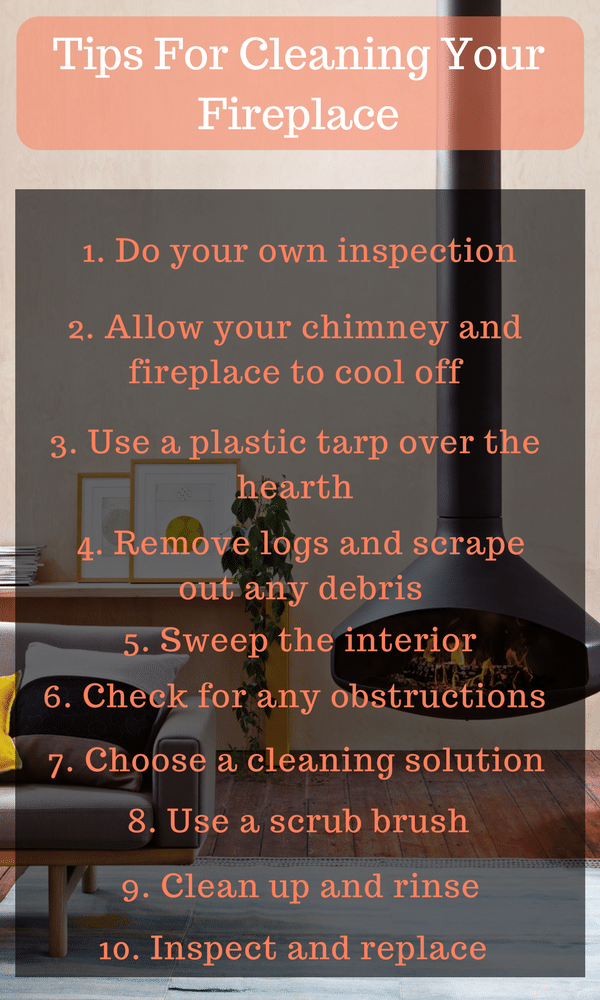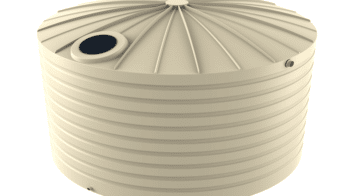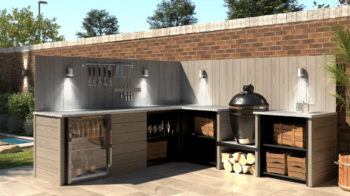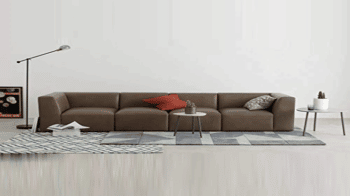
Fireplaces need to be cleaned regularly, for the safety of both you and your home. If you have never cleaned a fireplace or chimney before, it might be a good idea to have a professional come and take a look – even if you were planning on cleaning it yourself.

If you do feel capable and you want to save the money and hassles that come with hiring a professional – you can follow these tips to help get you started.
- Do your own inspection – this involves using your poker or another metal instrument to scrape away the black creosote from the lining. Creosote is the soot that has condensed becoming a tarry and toxic substance. Look at the appearance of the creosote, it should be dry and cracking or shiny and hardened. The thickness of the creosote will determine whether cleaning is needed or not. If the build-up is paper-thin you can hold off the cleaning for now, a thicker layer 2-3 mm will require attention, if the build-up is more than 5 – mm thick it will need to be removed before you use your fireplace again. Creosote needs to be removed because it is combustible and can catch fire in the flue, which can lead to a house fire. Keeping the chimney clean helps keep everything running smoothly and prevents a dangerous situation.
- Allow your chimney and fireplace to cool off – you should always wait till everything has cooled down before you attempt to clean it, which can actually take longer than you think. It’s best to wait at least a day after you last use the fireplace before you begin cleaning. This will also ensure soot in the air has settled before you start cleaning, even if you do wait for the dust to settle it’s advisable to wear a filtered mask to protect your airways and lungs.
- Use a plastic tarp over the hearth – to protect the hearth and the floor from cleaning solutions and dirt you should place a plastic tarp around or in front of your wood fire fireplace. While newspaper will also work, a tarp will not only protect your floors, it will make removing any dust and debris a lot easier.
- Remove logs and scrape out any debris – before cleaning, put on your filtered mask, it’s also advisable to wear rubber gloves as you will be touching a somewhat toxic substance. Sprinkle some coffee grounds on top of the ashes to help prevent debris from entering the air. Scoop the remains into a paper bag or bucket using a dustpan or shovel. Brush off the logs – they may have some debris and creosote on them.
- Sweep the interior – you can always use the brush attachment on your vacuum cleaner to help with this. A circular chimney brush works well to remove and scrape off the creosote and soot. Your brush should be around 20 to 26cm in diameter or at least 3cm larger than your flue. Check the damper to ensure its positioned correctly and keep the flue open till you have finished cleaning.
- Check for any obstructions – you should have a chimney cap installed to keep debris, leaves and rain water out of the chimney. Mesh around the sides of the cap serve as a spark arrestor, if you have any trees overhanging the chimney they need to be trimmed.
- Choose a cleaning solution – you can use vinegar and water, cream of tartar or even detergent and baking soda, sometimes regular soap and water is all you need to remove soot. Another product is a spray cleaner, you spray, leave for the specified amount of time and wipe away.
- Use a scrub brush – make sure the brush you use is durable, dip the brush into your cleaning solution and scrub the interior in small circular patterns, start as high as you can and work downwards ensuring all the debris is being removed.
- Clean up and rinse – when you are finished with the scrubbing, rinse the chimney and walls with clean water, using paper towels or a rag or sponge. Pick up your newspapers or tarp and throw out all the waste. Once everything has dried take the andirons (the iron bars that hold the logs in place for burning) and the grate outside and using a wire brush scrape all the soot off them. If you have brass andirons you may want to rub them over with a little metal polish.
- Inspect and replace – once you are finished take time and double check that you have done everything correctly, replace everything and do a final dusting to remove any residue. Your fireplace is now ready for your next fire.





